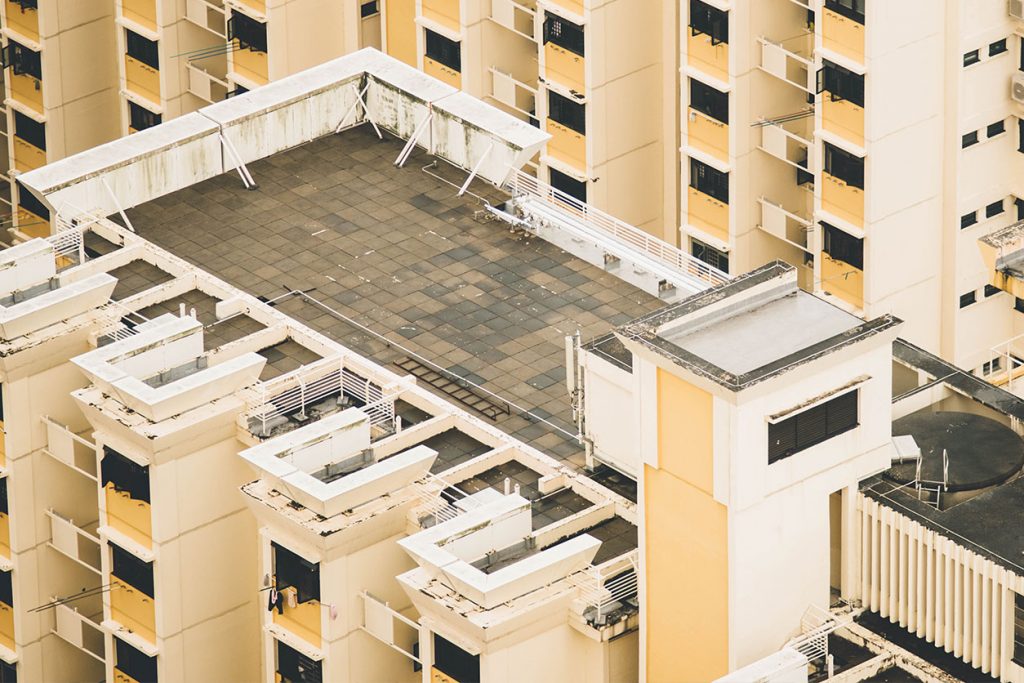
What Are Roofs Made Of On Your Commercial Building?
What Are Roofs Made Of On Your Commercial Building? https://pbroofingco.com/wp-content/uploads/2020/08/unsplashimg-chuttersnap-BpnecXy_NlA.jpg 1254 836 PB Roofing https://secure.gravatar.com/avatar/ee28a6949ea6af745b0ddec55b8b9ce1?s=96&d=mm&r=gWhat Are Roofs Made Of? Identifying Materials and Types
Installing or replacing a roofing system in a commercial building will depend on the physical structure and project budget. However, this is a critical choice, as roofing types directly impact the building’s overall health and the longevity of the roof itself. As a building owner or facility manager, you must be asking the critical question: What are roofs made of?
Let’s take a look at what the majority of commercial buildings are using.
1. Built-Up Roofing (BUR) Membrane
Built-up roofing, a low-slope system, is made up of layered tar and gravel. This material is budget-friendly, as the number of layers can adjust pricing. The layering also allows the roof to meet durability requirements. As an industry-standard, this roofing system is cost-effective and offers incredible longevity.
2. Metal Roofing
Steel, copper, aluminum, tin, and other metals can be used for metal roofing. With any metal, however, rust may occur. Therefore, it’s crucial to add on a coating to prevent damage from sun exposure and other weather climates.
A metal roof is quite light and can be installed on top of an existing system, making it an ideal candidate for a replacement. Not only do metal roofs have a visual appeal, but they also offer significant durability and stability. Although light, metal can withstand the weight of snow and power of high winds.
3. Single-Ply Membrane
Single-ply roof systems are sheets of rubber and other synthetics that are layered for optimal protection. They can be ballasted, mechanically fastened, or chemically adhered to insulation. These roofs are quite UV resistant and, similar to metal, can be installed over an existing system.
There are two types of single-ply membranes. Thermosets are made up of rubber, whereas thermoplastics are made up of plastic-based materials. Thermoplastics are ideal for large areas to reduce the number of seams. Talk to your roofing professional to determine which type is right for your building.
4. Shingle Roofing
While shingles are more commonly seen on residential homes, they are often used for steep-slope commercial roofs. Shingles can actually be made of several different materials, such as wood, slate, metal, plastic, ceramic, and asphalt. Asphalt shingles are quite popular, but architectural shingles may be the better option for your commercial building. Architectural shingles are quite durable and weatherproof.
5. Green Roofing
Green roofing systems are growing in popularity over recent years—especially in bigger cities. These “hidden gardens” are sustainable, offer protection from the elements, manage water drainage, and improve energy efficiency. A green roof is a beautiful sight for any passerby and an even better place to recharge for employees!
The Next Steps for Your Commercial Building
Now that you’re familiar with different roofing materials and systems, it’s time for the next step. Reach out to PB Roofing to discuss the needs of your building. Are you looking for an upgrade or a complete replacement? Do you need to conduct an inspection to determine the best solution? Our team is ready and able to assist you.
